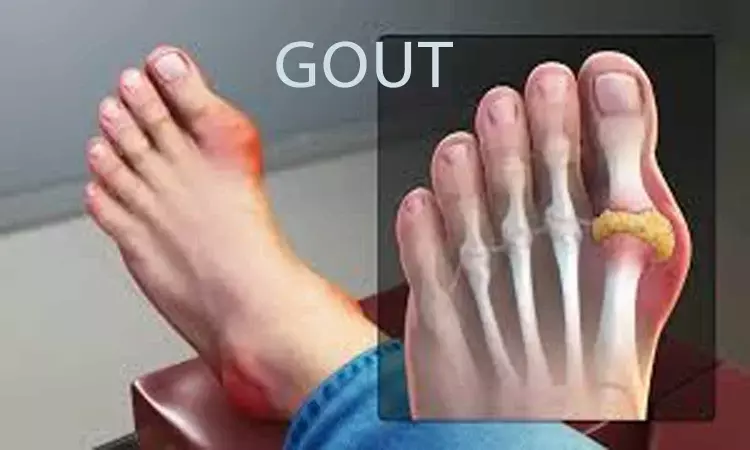- Home
- Medical news & Guidelines
- Anesthesiology
- Cardiology and CTVS
- Critical Care
- Dentistry
- Dermatology
- Diabetes and Endocrinology
- ENT
- Gastroenterology
- Medicine
- Nephrology
- Neurology
- Obstretics-Gynaecology
- Oncology
- Ophthalmology
- Orthopaedics
- Pediatrics-Neonatology
- Psychiatry
- Pulmonology
- Radiology
- Surgery
- Urology
- Laboratory Medicine
- Diet
- Nursing
- Paramedical
- Physiotherapy
- Health news
- Fact Check
- Bone Health Fact Check
- Brain Health Fact Check
- Cancer Related Fact Check
- Child Care Fact Check
- Dental and oral health fact check
- Diabetes and metabolic health fact check
- Diet and Nutrition Fact Check
- Eye and ENT Care Fact Check
- Fitness fact check
- Gut health fact check
- Heart health fact check
- Kidney health fact check
- Medical education fact check
- Men's health fact check
- Respiratory fact check
- Skin and hair care fact check
- Vaccine and Immunization fact check
- Women's health fact check
- AYUSH
- State News
- Andaman and Nicobar Islands
- Andhra Pradesh
- Arunachal Pradesh
- Assam
- Bihar
- Chandigarh
- Chattisgarh
- Dadra and Nagar Haveli
- Daman and Diu
- Delhi
- Goa
- Gujarat
- Haryana
- Himachal Pradesh
- Jammu & Kashmir
- Jharkhand
- Karnataka
- Kerala
- Ladakh
- Lakshadweep
- Madhya Pradesh
- Maharashtra
- Manipur
- Meghalaya
- Mizoram
- Nagaland
- Odisha
- Puducherry
- Punjab
- Rajasthan
- Sikkim
- Tamil Nadu
- Telangana
- Tripura
- Uttar Pradesh
- Uttrakhand
- West Bengal
- Medical Education
- Industry
Anakinra an effective option for gout flares, Study says

According to recent study, it has been found out by the researchers from the Division of Clinical Immunology and Rheumatology, University of Alabama, Birmingham, AL, USA that Anakinra is an effective option for gout flares when conventional therapy is unsuitable.
The study is published in the Arthritis and Rheumatology Journal.
Gout is strongly associated with comorbidities, including obesity, metabolic syndrome, type II diabetes, hyperlipidemia, hypertension, chronic kidney disease (CKD), and coronary artery disease. Comorbidities frequently restrict conventional treatment options (ie, nonsteroidal anti-inflammatory drugs [NSAIDs], colchicine, corticosteroids) for gout flares. Acute gout flares are mediated by NLRP3 inflammasome activation with consequent interleukin-1β (IL-1β) release.
Anakinra was non-inferior to conventional approved therapies for acute gouty arthritis in a recent controlled trial. However, the interleukin-1 (IL-1) receptor antagonist anakinra is an effective, off-label option in acute gout flares, when conventional therapy options are narrowed.
Hence, Kenneth G. Saag and colleagues conducted the present study to evaluate anakinra efficacy and safety compared to triamcinolone in the treatment of gout flares.
Patients unsuitable for NSAIDs and colchicine were enrolled in this multi‐center, randomized, double‐blind study lasting for up to 2 years (NCT03002974). The design was to show superiority of anakinra (100 or 200 mg/day for 5 days) over triamcinolone (40 mg single injection) for primary endpoint of changed patient‐assessed pain intensity from baseline to 24–72 hours in the most affected joint measured on visual analogue scale (0–100). Secondary outcomes included: safety, immunogenicity, and patient's and physician's global response assessments.
A total of 165 patients were randomized (110 to anakinra, 55 to triamcinolone) with a median age of 55 (range 25–83) years out of which 87% were men, mean disease duration was 8.7 years, and mean number of self‐reported flares during prior year was 4.5. In total, 301 flares were treated (214 anakinra; 87 triamcinolone).
The following results were observed-
a. Both anakinra doses and triamcinolone provided clinically meaningful reduction in patient‐assessed pain intensity in the 1st and subsequent flares.
b. For the 1st flare, the mean pain intensity decline from baseline to 24–72 hours for total anakinra and triamcinolone was ‐41.2 and ‐39.4, respectively (p=0.688).
c. Most secondary endpoints favored anakinra.
d. No unexpected safety findings were identified.
e. Presence of anti‐drug antibodies was not associated with adverse events or altered pain reduction.
Therefore, the authors concluded that "Anakinra was not superior to triamcinolone for the primary endpoint, but had comparable efficacy in pain reduction, and was favored for most secondary endpoints. Anakinra is an effective option for gout flares when conventional therapy is unsuitable."
Dr. Nandita Mohan is a practicing pediatric dentist with more than 5 years of clinical work experience. Along with this, she is equally interested in keeping herself up to date about the latest developments in the field of medicine and dentistry which is the driving force for her to be in association with Medical Dialogues. She also has her name attached with many publications; both national and international. She has pursued her BDS from Rajiv Gandhi University of Health Sciences, Bangalore and later went to enter her dream specialty (MDS) in the Department of Pedodontics and Preventive Dentistry from Pt. B.D. Sharma University of Health Sciences. Through all the years of experience, her core interest in learning something new has never stopped. She can be contacted at editorial@medicaldialogues.in. Contact no. 011-43720751
Dr Kamal Kant Kohli-MBBS, DTCD- a chest specialist with more than 30 years of practice and a flair for writing clinical articles, Dr Kamal Kant Kohli joined Medical Dialogues as a Chief Editor of Medical News. Besides writing articles, as an editor, he proofreads and verifies all the medical content published on Medical Dialogues including those coming from journals, studies,medical conferences,guidelines etc. Email: drkohli@medicaldialogues.in. Contact no. 011-43720751


